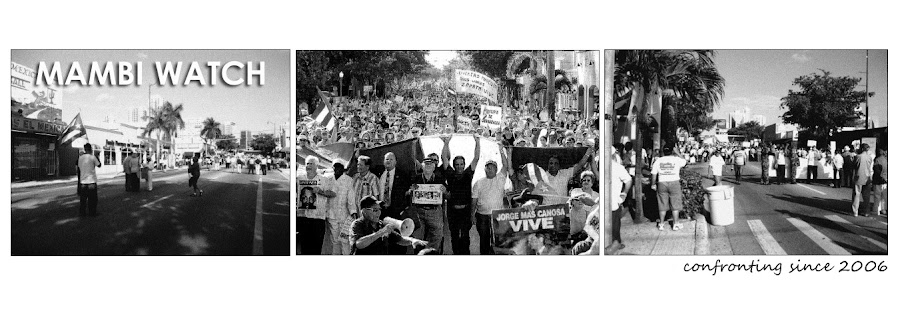On May 16, 2007, Henry Gomez from the Babalu Blog wrote a lengthy post titled "The Peddling of a Myth." Mr. Gomez, provoked by a Miami Herald (Ana Menendez) column published that day, argues that a "miniscule [sic] Cuban-American left" (of whom Mr. Gomez mentions Ana Menendez and Joe Garcia as examples) are perpetuating a lie: "That the historical exile community is old, that it’s losing its power and that the Cuban-American community is fractured in its thinking on the Cuba problem."
Mr. Gomez believes this lie has two functions:
- The egotistical Left "desperately want to believe that people are joining them;"
- The surreptitious Left "tell a lie so many times that it begins to be perceived as truth," and as a consequence "there are some Cuban-Americans that believe exactly what these false prophets believe."
To support his argument, Mr. Gomez says that the Left "cite surveys, which they conduct. They splice the data by date of arrival and attempt to show that the growing portion of the Cuban-American community, the most recent arrivals do not identify with the 'historical' exile community."
Mr. Gomez is obviously referring to the recent Bendixen and FIU Cuba Poll, both of which have been commented on Babalu Blog upon their release. You can read Mr. Gomez's earlier posts on Bendixen and FIU at your leisure. But, this is the first time I have seen Mr. Gomez comment on the interpretation of the waves of arrival for Cuban immigrants.
Analysis of statistical data through cohorts (what Mr. Gomez calls "splic[ing] the data") is standard practice. The wave cohorts of Cuban immigrants used by FIU and Bendixen have been used by other studies, with some variation. Some identify four waves of Cuban immigration since 1959, and others identify six. But, there isn't a hidden agenda behind this common research practice, as may be implied by Mr. Gomez.
Looking at the latest results of the FIU Cuba Poll, there were clear differences in the response of Cubans depending on their arrival to the US. On the question of a "national dialogue" (one example that Mr. Gomez mentions), the majority of Cubans (56.8%) who arrived between 1959-1964 oppose the idea of a "national dialogue among Cuban exiles, Cuban dissidents, and representatives of the Cuban government." But, among Cubans who arrived between 1985-1994, the majority (65.5%) favor a "national dialogue." Those are stark differences to interpret.
Nevertheless, Mr. Gomez believes that the Left's "analysis is flawed in one major way. They assume that these recently arrived Cubans will maintain the same ideas the[y] presently have over the rest of their lives. It’s a static model, which doesn’t account for migration away from their dialoguero ["national dialogue"] position. Logic and hard evidence would seem to dictate that this is an improbable scenario."
Let's examine Mr. Gomez's "logic and hard evidence."
[Part 2]

No comments:
Post a Comment